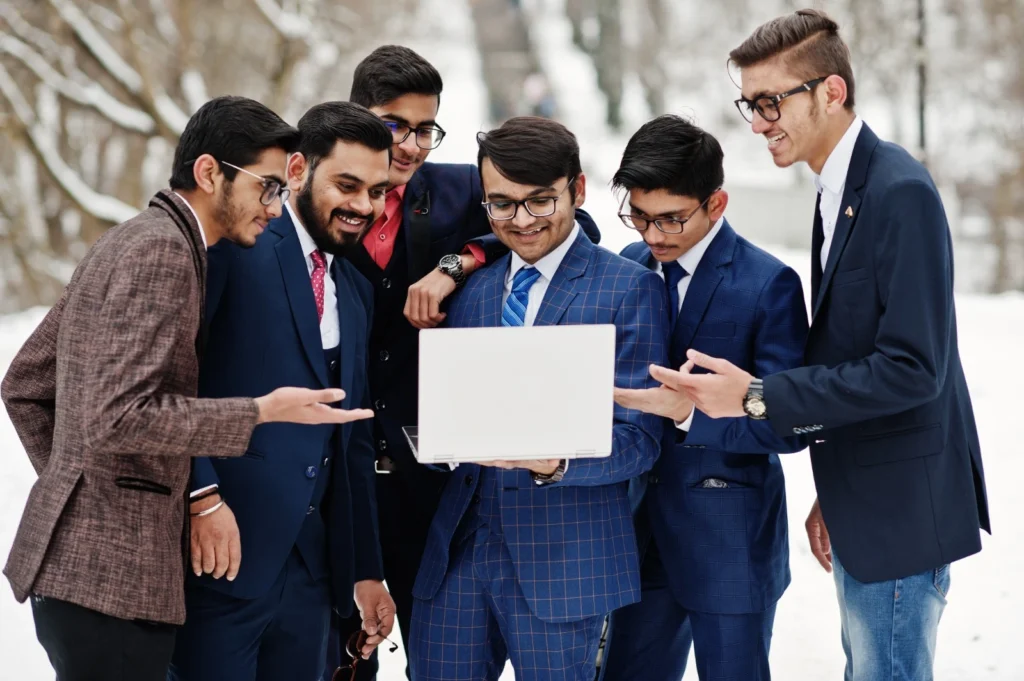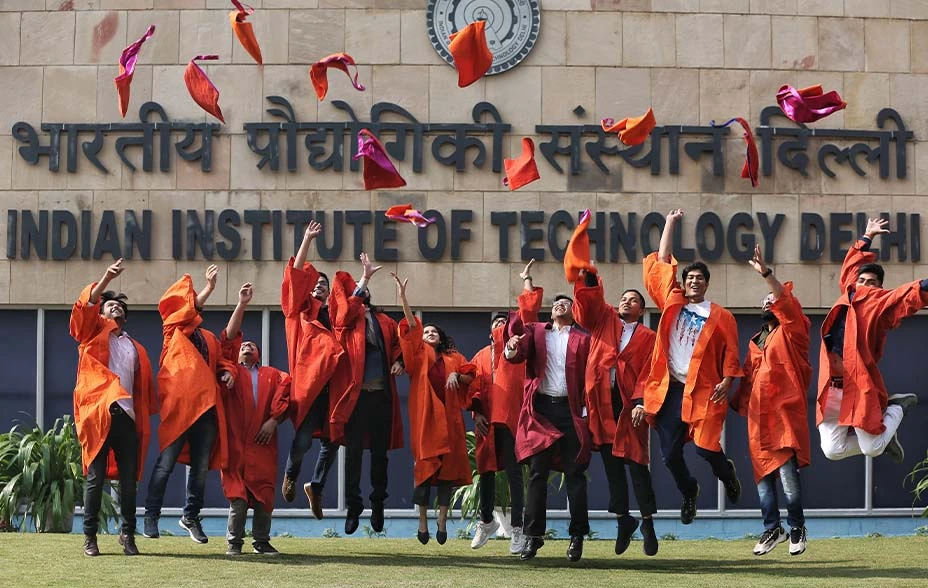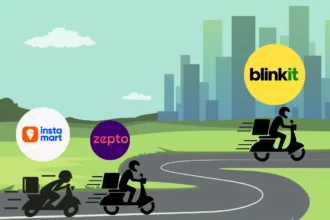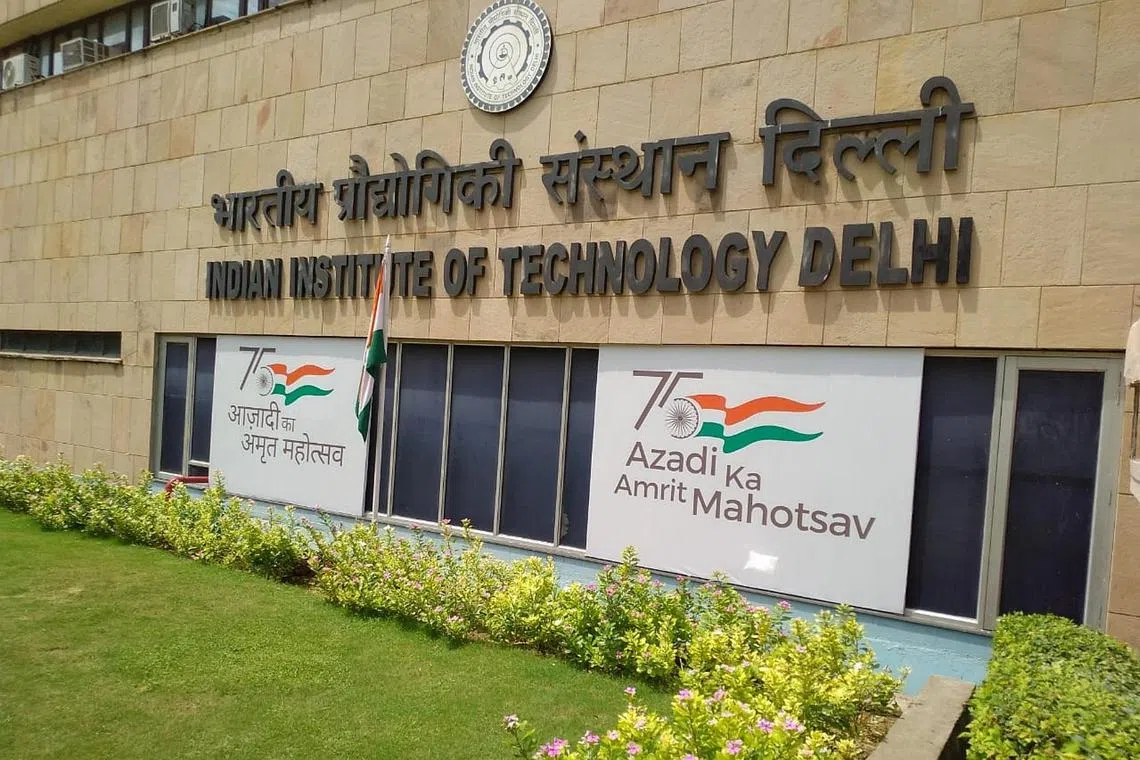Estimated Reading Time: 22-25 minutes (3,472 words)
Introduction
India’s higher education system is at a defining moment. For decades, the Indian Institutes of Technology (IITs) have stood as the ultimate symbol of academic excellence and intellectual rigor — a brand recognized from Silicon Valley to Singapore. These institutions not only produce some of the world’s top engineers, scientists, and entrepreneurs but have also shaped India’s global identity in technology and innovation. Admission into an IIT remains one of the most competitive academic feats on the planet, with acceptance rates often below 1%, making it tougher than getting into Harvard or MIT.
However, a new wave is rising. Global universities are turning their gaze toward India, drawn by its massive youth population, growing middle class, and increasing demand for world-class education. Institutions such as Deakin University, the University of Wollongong, and New York University are exploring or establishing campuses in India under the new regulatory frameworks like the University Grants Commission (Setting up and Operation of Campuses of Foreign Higher Educational Institutions in India) Regulations, 2023. Simultaneously, partnerships between IITs and foreign universities are accelerating — from IIT Madras’s collaboration with the University of Birmingham to IIT Delhi’s joint programs with the University of Queensland.
This changing landscape raises a critical question for the next decade: Can IITs maintain their dominance as global education becomes more borderless? While foreign universities bring global exposure, diverse pedagogy, and research capital, IITs possess deep local networks, strong alumni ecosystems, and unmatched credibility in Indian and global job markets. The race ahead is not just about prestige — it’s about innovation, research output, employability, and how effectively institutions adapt to a hybrid, AI-driven, and globally connected future.

Current Status of IITs & Global Universities
1.1 Rankings & Research Performance
India’s IITs have steadily strengthened their global academic reputation over the past decade. Once known primarily as undergraduate powerhouses, they are now increasingly recognized for research depth, innovation output, and global partnerships. For example, IIT Delhi broke into the Top 125 in the QS World University Rankings 2026, its best performance to date, while IIT Bombay and IIT Madras also ranked in the Top 150 globally, marking a steady climb year-on-year (The Economic Times, 2025).
In the QS Asia University Rankings 2026, five IITs — Bombay, Delhi, Madras, Kanpur, and Kharagpur — secured spots within Asia’s Top 100, a strong indicator of improving academic and employer reputation (Hindustan Times, 2025). Much of this progress is driven by IITs’ growing research ecosystems and international collaborations. According to arXiv data, IITs’ joint publications with U.S., German, and U.K. institutions have grown by over 35% in five years, especially in strategic areas such as renewable energy, AI, and sustainable materials — all aligned with the UN Sustainable Development Goals (SDGs).
At the same time, IITs are grappling with persistent structural challenges. Their faculty-to-student ratio remains weaker than top-ranked global peers like MIT or ETH Zurich, and international student representation is still below 3%, limiting global exposure. Yet, with the National Research Foundation (NRF) and Inspire Faculty Fellowship initiatives, IITs are expected to improve faculty recruitment and research funding over the next decade.
🔹 Key Fact-Box: IITs vs Global Benchmarks
| Metric | Trend | Implication |
| Number of Indian universities in QS list | Big increase (e.g., 54 institutions as of 2026) (IndiaTimes) | Indicates system-level growth but raises competitive stakes for IITs |
| International research collaboration | Increasing rapidly (especially with USA, Germany, UK) (arXiv) | IITs must deepen global linkages to sustain leadership |
| Faculty/Student ratio & internationalization | Still low compared to global peers (QS Data) | Major area for reform to reach world-class status |
| Patent filings from IITs | 20% YoY increase since 2021 (DST India) | Reflects improving innovation ecosystem |
| Industry-funded research | Now ~₹1,200 crore annually (IIT Council Report 2025) | Demonstrates growing industry-academia synergy |
1.2 Student Mobility & Market Dynamics
Historically, top Indian engineering aspirants either dreamt of cracking the JEE Advanced for IITs or heading abroad for degrees from the US, UK, or Australia. However, that equation is shifting. Rising tuition costs, visa uncertainty, and global economic fluctuations are prompting more students to reconsider studying abroad. For instance, data from upGrad (2025) shows that the proportion of Indian students opting for the US dropped from 60% to 47% in the past five years, as countries like Canada, Germany, and even India itself became more attractive for quality education with better ROI (Reuters, 2025).
Meanwhile, India’s domestic higher education landscape is expanding — not only through IITs but also through private and global entrants. With foreign university partnerships, dual-degree programs, and online global certifications gaining traction, the Indian student of 2030 will have more hybrid pathways — blending domestic affordability with global exposure. Platforms like Coursera, edX, and IITx have further democratized access to top-tier learning experiences, reducing the compulsion to migrate for education.
1.3 Policy Shifts & Foreign Campuses in India
The Indian government is actively reshaping its higher education policy to make India a global education hub. Under the UGC’s 2023 Regulations, foreign universities ranked among the world’s top 500 can now set up fully independent campuses in India. Institutions such as Deakin University and University of Wollongong (Australia) have already announced campuses at the GIFT City, Gujarat — the first such move in India’s history (Times Higher Education, 2025).
This marks a profound policy shift aimed at reducing brain drain, attracting foreign capital, and raising academic standards domestically. It also means IITs will no longer hold an exclusive grip on India’s top-tier education ecosystem. Over the next decade, IITs will face competition not just from each other but from foreign campuses offering international degrees without the cost and visa burden of overseas study.
However, this competition could be mutually beneficial. IITs might leverage these changes to forge more joint research centres, co-branded programs, and global faculty exchanges, enhancing both global visibility and academic quality. The real challenge for IITs will be maintaining their identity as innovation-driven institutions while evolving into globally networked universities — a transformation that will determine their relevance in the 2030s.
Key Competitive Pressures on the IITs
The IITs are facing a new era of competition — not only from Indian private universities like Ashoka or BITS Pilani but also from global giants entering India’s education landscape. The next decade will test whether IITs can sustain their academic dominance amid international entrants bringing world-class infrastructure, flexible curricula, and global exposure. Below are the three most critical pressure points shaping IITs’ future competitiveness.
2.1 International Faculty & Research Funding
One of the biggest differentiators between IITs and elite global universities such as MIT, Stanford, or ETH Zurich lies in faculty composition and research funding depth. Top-tier global universities maintain 40–60% international faculty ratios and command research endowments exceeding $1 billion. By contrast, IITs’ international faculty share remains below 2%, largely due to bureaucratic hiring rules, lower pay scales, and visa barriers (Times Higher Education, 2025).
While IITs have made progress — such as through visiting scholar programs and joint PhD supervision with institutions like the University of Queensland and NUS — the scale remains modest. The QS 2026 commentary highlights that improving faculty diversity and international collaboration is essential for IITs to move into the global Top 100 bracket. Research funding also presents a major challenge: IITs depend heavily on government grants, while global peers attract large corporate sponsorships, alumni endowments, and patent commercialization income.
The Indian government’s National Research Foundation (NRF) aims to inject ₹50,000 crore (~$6 billion) into scientific research over five years, which could be a turning point. However, unless IITs gain more financial autonomy and industry partnerships, they risk stagnating in research innovation and failing to match global universities’ velocity.
🔹 Quick Fact Snapshot:
- International faculty at IITs: <2% (vs >40% in top global universities)
- Average annual research budget per IIT: ~₹250–300 crore (vs $500M+ in leading U.S. schools)
- Average IIT salary for professors: ₹25–30 lakh/year, compared to $150K–$250K in the U.S.
- Number of joint international patents filed: Up 18% YoY (DST 2025) — showing gradual progress
Unless these gaps are strategically closed, IITs may struggle to retain world-class faculty and compete in next-generation research fields like quantum computing, biotechnology, and AI ethics — all of which are attracting global funding at unprecedented levels.
2.2 Global Student Attraction & Retention
For IITs to evolve from national icons to truly global universities, they must do more than send their top graduates abroad — they must attract global talent to India. Currently, international students represent less than 1% of total IIT enrollment, compared to 25–30% at leading global institutions (IndiaTimes, 2025). This low diversity weakens cultural exchange, research diversity, and global ranking performance.
Foreign universities setting up in India — such as Deakin University and University of Wollongong — are expected to attract both Indian and international students by offering globally accredited degrees without relocation costs. These programs are likely to appeal to upper-middle-class Indian families who once viewed IITs as the pinnacle of education but now prefer international credentials with flexible curricula.
Meanwhile, IITs face a “reverse brain-drain” paradox — while they lose top Indian undergraduates to Ivy League and European universities, they struggle to attract even regional talent from Southeast Asia, Africa, or the Middle East. Efforts like IIT Madras’s Zanzibar campus (India’s first international IIT campus) are steps in the right direction, signaling an ambition to export the IIT brand globally. But scalability and quality control will determine its success.
To remain competitive, IITs need to:
- Introduce more global undergraduate and master’s exchange programs
- Offer dual-degree options with foreign partners
- Enhance campus infrastructure and international student services
- Simplify admissions and visa processes for foreign students
Only then can they reposition themselves as Asia’s premier science-and-tech hubs instead of regional strongholds.
2.3 Brand vs Cost vs Outcomes
The IIT brand remains unmatched in India — synonymous with brilliance, discipline, and global employability. IIT alumni head companies like Google (Sundar Pichai), Adobe (Shantanu Narayen), and Zerodha (Nikhil Kamath), cementing the institutes’ legendary status. However, as education globalizes, brand loyalty alone won’t guarantee dominance.
In the new landscape, students and parents increasingly calculate education in terms of ROI — not just prestige. If a foreign university in India (say, NYU or Deakin) can offer a globally recognized degree, international internships, and placements with multinational companies — all without the ₹1 crore+ cost of studying abroad — it becomes a formidable competitor.
IITs have begun responding with innovation-focused initiatives like:
- IIT Madras Research Park (India’s first university-driven innovation hub)
- IIT Bombay’s “Abhyuday” and “E-Cell” accelerators to drive student startups
- Interdisciplinary B.Tech. programs combining AI, design, and management
But to truly defend their leadership, IITs must strengthen their placement ecosystems, ensure global mobility, and showcase career outcomes that match global institutions. As job markets evolve towards AI, sustainability, and remote-first models, IITs’ ability to upskill students rapidly and integrate global exposure at local cost will define their next decade of relevance.
In short — the competition isn’t just about prestige anymore; it’s about value, visibility, and verifiable outcomes.
Where IITs Hold Strength & Where They Must Improve
The IIT system, while facing increasing global competition, still possesses deep structural advantages — from brand power to alumni networks — that remain difficult for even the best international universities to replicate quickly. Yet, as the world’s education ecosystem evolves, the IITs must confront several internal bottlenecks and strategic gaps to secure their place among the world’s top 100 universities.

3.1 Strengths: Brand, Alumni, and the Homegrown Talent Pool
Few educational brands in Asia carry the prestige and credibility of the Indian Institutes of Technology (IITs). Since their founding in the 1950s, IITs have produced generations of global leaders in technology, academia, and entrepreneurship — creating what analysts call the “IIT halo effect.” This brand equity continues to be one of India’s strongest global academic exports.
- Alumni Power: IIT graduates lead some of the world’s largest and most influential organizations — from Google’s Sundar Pichai and Adobe’s Shantanu Narayen, to founders of Zerodha, Ola, and Flipkart. This alumni network acts as a massive global support system that enhances employer reputation and corporate partnerships. Many IIT alumni also donate funds, mentor students, and help drive international visibility for their alma mater.
- Brand Recognition: According to the QS Global Employer Reputation Index 2026, IITs collectively rank among the Top 50 worldwide in terms of employer trust and job outcomes — a metric often valued more than academic citations in the job market.
- Domestic Talent Advantage: India has one of the world’s largest youth populations (over 600 million under 25 years) and produces 1.5 million engineers annually. IITs, with their rigorous entrance exam (JEE Advanced), attract the crème de la crème — students who would otherwise qualify for elite global programs. This massive domestic talent base gives IITs a consistent supply of high-performing candidates and potential innovators.
- Affordable World-Class Education: Despite their prestige, IITs remain publicly funded and affordable compared to global peers. An IIT engineering degree costs around ₹10–12 lakh total, versus ₹1–2 crore for a comparable global degree. This affordability ensures diversity and accessibility — a critical strength for long-term sustainability.
→ In essence, IITs combine elite branding, a powerful alumni network, and an unmatched domestic talent funnel — a trio few global competitors can replicate easily.
3.2 Weaknesses: Internationalisation, Faculty–Student Ratio, and Research Impact
Despite their achievements, IITs face several structural challenges that could limit their climb in global rankings if left unaddressed.
- Low Internationalisation: Most IITs still lag far behind global peers in attracting foreign students and faculty. As per QS data (2026), the average international student ratio across IITs is below 1%, while top universities like NUS, Cambridge, and ETH Zurich maintain ratios between 25–35%. This affects global visibility, cultural diversity, and ranking scores.
- Faculty–Student Ratio Gaps: With the rising intake of students through new IITs and expansion of programs, the faculty-to-student ratio in many IITs remains around 1:15 or higher, compared to 1:8 in top-tier global institutions. This impacts mentorship, research quality, and individualized learning experiences (IndiaTimes, 2025).
- Research Infrastructure and Global Collaboration: While IITs have made strong strides in research output, their impact factor and global citations lag behind leading Western and Asian universities. Advanced fields like AI, quantum computing, biotechnology, and climate tech require not just talent but massive capital investment and cross-border research partnerships.
- Funding Flexibility: Many IITs still rely heavily on central government grants, with limited autonomy in attracting foreign capital or philanthropic endowments. In contrast, top universities like Stanford or MIT rely on large private endowments (>$20 billion), giving them the flexibility to scale faster in new disciplines.
These weaknesses make IITs vulnerable to being outpaced by agile foreign universities that can establish campuses in India with superior infrastructure, diversified funding, and global faculty networks.
3.3 Case Study: IIT Delhi’s Leap in QS Rankings (2026)
A standout success story among the IITs is IIT Delhi, which achieved a remarkable jump into the Top 125 in the QS World University Rankings 2026 — its highest-ever position (IIT Delhi, 2025). The institution’s performance demonstrates how strategic focus and sustained investment can translate into global visibility.
- Employer Reputation: IIT Delhi ranked within the Top 50 worldwide for employer reputation, reflecting its alumni success and strong ties with leading global companies in technology, consulting, and R&D.
- Research Citations per Faculty: The institute showed a 40% increase in citations per faculty from 2022 to 2026, largely due to strategic collaborations with international universities like the University of Queensland, Tel Aviv University, and the University of British Columbia.
- Industry Partnerships: IIT Delhi’s partnerships with major corporations — including Intel, Google, and Tata Group — helped fund research labs in AI, clean energy, and material sciences. These collaborations not only expanded funding but also enhanced research-to-market translation — a key metric for global rankings.
- Focus on Globalization: Through the International PhD Fellowship Scheme and visiting faculty initiatives, IIT Delhi actively attracted global scholars and joint research projects, improving both diversity and academic influence.
Blueprint Insight: IIT Delhi’s ascent illustrates the formula for IITs to rise globally — focused investment in high-impact research, strategic industry alliances, and deliberate international engagement. If replicated system-wide, this model could propel multiple IITs into the global Top 100 by 2030.
In summary:
IITs’ strengths — brand prestige, alumni influence, and talent depth — give them a powerful foundation. Yet, to remain globally relevant, they must urgently address the internationalization gap, faculty constraints, and research competitiveness. The IIT Delhi case proves that with the right strategy, resources, and partnerships, India’s flagship institutions can not only keep pace with global universities — but even outperform them in the decade ahead.
10-Year Outlook: What to Expect by 2035
4.1 Scenario A: IITs Maintain Lead
- With strong policy support, increased funding, global partnerships, IITs could be among the world’s top tech/engineering schools. They might anchor global research consortia, host foreign students, and spin-out high-impact startups.
- Result: IITs retain brand leadership and compete on global terms.
4.2 Scenario B: Convergence with Global Universities
- Foreign universities set up high-quality campuses in India, joint degrees proliferate, and IITs adapt but don’t grow as fast. The distinction between “IIT” and “top foreign university” blurs for many Indian students.
- Result: More choice for students, more competition—leading to improvement across the board.
4.3 Scenario C: Foreign Universities Gain Ground in India
- If IITs fail to upgrade fast (faculty, research, internationalisation) and foreign campuses scale quickly (brand + global faculty + outcomes), then IITs could lose their privileged position in the Indian ecosystem.
- Though currently less likely, this is a risk.
Likely reality: A combination of A + B. IITs will evolve, global universities will enter the Indian domain, and the competitive landscape will intensify.
Actionable Steps for Stakeholders
5.1 For Students & Parents
- When choosing a programme, compare: global exposure, faculty credentials, placement statistics, cost/ROI, research opportunities.
- Consider hybrid pathways: IIT + foreign exchange, joint programmes, or foreign university campus in India.
- Build a future-proof skill set (AI, climate tech, quantum) and check how institutions are investing in these.
5.2 For IITs & Institutional Leadership
- Ramp-up international faculty hiring, research funding, global partnerships.
- Improve metrics that drive global rankings: citations per faculty, international students, industry funding.
- Develop executive education/micro-credentials to monetize alumni and global working professionals.
5.3 For Content Publishers / Blog Monetisation
- Create content comparing IITs vs global universities (cost + outcomes) to attract high-intent readers.
- Use affiliate links for: test-prep for JEE, study-abroad counselling, executive programmes at foreign universities.
Lead magnet: e-book “Checklist for Choosing Engineering/Tech Degree 2025-30” that captures email leads for future upsell.
FAQs Section
1: What does it mean when we say ‘global universities compete with IITs’?
When we say global universities are competing with IITs, it means that foreign higher education institutions — both their home campuses and new India-based branches — are now targeting the same ecosystem that IITs have long dominated. This includes competition for:
- Top Indian students who traditionally chose IITs for STEM and engineering degrees.
- Faculty talent, particularly research scholars and postdocs who drive innovation and citations.
- Research funding from governments, private corporations, and international organizations.
- Institutional prestige, measured by rankings, patents, and global visibility.
Essentially, global universities are entering the Indian market with strong brands, international degrees, and flexible curricula, offering Indian students access to global-quality education without needing to leave the country. This creates a “shared battlefield” for talent, reputation, and relevance.
2: Are IITs currently ranked among the top global universities?
Yes — the IITs are progressively improving their positions in global university rankings. As of the QS World University Rankings 2026,
- IIT Delhi ranked within the Top 125 globally, its highest ever position.
- IIT Bombay and IIT Madras are close behind in the Top 150 bracket.
- In the QS Asia University Rankings 2026, five IITs — Bombay, Delhi, Madras, Kharagpur, and Kanpur — are listed among Asia’s Top 100 universities.
These rankings reflect consistent growth in research output, employer reputation, and academic citations. However, IITs still lag behind the Top 50 universities globally due to relatively low internationalization and smaller research budgets compared to the likes of MIT, Stanford, and NUS.
3: What are the main strengths of IITs that foreign universities must catch up on?
The IITs have a unique combination of legacy, brand trust, and human capital that continues to set them apart:
- Global Brand Recognition: IITs are synonymous with engineering excellence and are well-known in global corporate and academic circles.
- Influential Alumni Network: IIT alumni lead major organizations worldwide — from Google’s Sundar Pichai to Adobe’s Shantanu Narayen — strengthening IITs’ brand credibility.
- Massive Domestic Talent Pool: India’s population of over 600 million under 25 ensures IITs have a continuous stream of world-class applicants.
- Engineering and Tech Ecosystem: IITs’ focus on core engineering, emerging technologies, and innovation has made them central to India’s digital and startup economy.
Foreign universities entering India may have global prestige but will need time to replicate IITs’ deep-rooted alumni ties, cultural influence, and local trust.
4: What are key gaps for IITs compared to top global peers?
Despite their achievements, IITs still have clear structural disadvantages:
- International Student/Faculty Ratio: Less than 2% international faculty and 1% international students, compared to 30–40% in elite universities like MIT, Oxford, or ETH Zurich.
- Research Impact & Funding: Lower per-faculty research output and fewer large-scale interdisciplinary research centres.
- Global Visibility: The IIT brand is well-known in tech circles but less visible in global academic and policy spaces.
- Infrastructure & Autonomy: Limited autonomy in funding, recruitment, and curriculum flexibility compared to private or foreign institutions.
These areas require major reform if IITs aim to compete on equal footing with world-class institutions.
5: How significant is the policy about foreign university campuses in India?
This policy is a game-changer for India’s higher education sector. Under the UGC’s 2023 Regulations, foreign universities ranked among the Top 500 globally can set up independent campuses in India with full academic and financial autonomy.
- Deakin University and University of Wollongong (Australia) are already establishing campuses at GIFT City, Gujarat, marking the start of this trend (Times Higher Education, 2025).
- These institutions will offer globally recognized degrees at Indian cost levels, potentially transforming access to premium education.
- It may reduce brain drain, retain top Indian talent, and raise overall quality benchmarks.
However, it also means IITs will face unprecedented competition on their own home ground — especially for elite students and corporate-funded research.
6: Will Indian students still prefer going abroad for higher education?
Likely yes — but the trend is shifting.
According to Reuters (2025), the percentage of Indian students heading to the US dropped from 60% to 47% in recent years, mainly due to:
- Rising tuition and living costs abroad.
- Visa and post-study work restrictions in Western countries.
- The emergence of high-quality domestic and hybrid global programmes (joint degrees, online learning, foreign campuses).
While the aspiration to study abroad remains strong for exposure and prestige, many students are now opting for international degrees delivered locally — a model expected to grow rapidly by 2030.
7: What should students ask when choosing between IIT vs a foreign university?
When deciding between an IIT and a global university (in India or abroad), students should evaluate both short-term outcomes and long-term returns. Key questions include:
- Curriculum: Is it industry-relevant and aligned with future skills like AI, sustainability, or data science?
- Global Recognition: Is the degree internationally accredited and recognized by employers?
- Placement & ROI: What are the average salaries, placement rates, and post-study work options?
- Cost of Study: Compare total tuition, living expenses, and opportunity costs.
- Research Ecosystem: Does the institution offer hands-on research and mentorship opportunities?
- Alumni & Network: Does it open global career and collaboration doors?
A structured decision matrix — factoring in cost, quality, exposure, and career outcomes — helps identify the best fit for individual goals.
8: How can IITs improve to stay ahead?
To remain competitive in the next decade, IITs must act like global universities while retaining their Indian identity. Key steps include:
- Hire Global Faculty: Relax hiring norms to bring in international researchers and visiting professors.
- Deepen Global Collaboration: Expand joint research centres with top 100 universities worldwide.
- Enhance Research Funding: Encourage alumni endowments, CSR investments, and international grants.
- Improve Student Diversity: Offer scholarships and exchange programs for foreign students.
- Leverage Technology: Use AI, digital classrooms, and global online partnerships for hybrid learning.
- Promote Innovation: Strengthen incubation and startup ecosystems within IIT campuses.
In short, IITs must transform from elite Indian institutes to globally networked innovation hubs.
9: What industries will benefit most from the IIT–global university competition?
This rivalry will accelerate innovation across India’s high-growth technology sectors, including:
- Artificial Intelligence & Data Science
- Quantum Computing
- Clean Energy & Sustainability Tech
- Advanced Manufacturing & Robotics
- Biotechnology & Health Tech
- Semiconductors & Electronics Design
Both IITs and global universities will seek corporate partnerships and funding in these domains — benefiting industries with access to cutting-edge research, a skilled workforce, and faster technology transfer.
10: How can content creators monetise this topic?
The IIT vs Global University debate is rich with SEO and affiliate monetization potential. Creators can generate steady traffic and income through:
- Comparison Guides: “IIT vs Global University — Which is Better in 2025?”
- Affiliate Marketing: Partner with test-prep platforms (JEE, GRE, IELTS) or ed-tech brands (upGrad, Coursera).
- Counselling Services: Collaborate with study-abroad and career counselling firms.
- Lead Magnets: Offer downloadable PDFs — e.g., “Top 10 IIT Alternatives for Indian Students.”
- Sponsored Content: Partner with universities or coaching brands for advertorials.
- YouTube/Podcast Series: Host interviews with IIT alumni and foreign university students for insights.
With consistent SEO and credible insights, this niche can deliver sustained organic traffic and multi-channel monetization (ads, affiliates, sponsorships).
✅ In Summary:
The IITs remain formidable institutions, but the next decade will redefine higher education in India. As global universities enter the Indian market, IITs must double down on research excellence, international partnerships, and student outcomes. For students, this means more choices; for creators, a content goldmine.
Summary / Key Takeaways
- IITs are improving globally (rankings, research) but they face new competitive pressures from global universities and policy changes.
- Strengths: brand, talent pool, alumni network. Weaknesses: global faculty, international students, research scale.
- Over the next 10 years, the landscape will shift: both cooperation and competition will increase.
- Students, parents, and institutions must proactively adapt—choice will proliferate, and outcomes will matter more than ever.
- For content publishers, this is a rich topic for monetisation via affiliate links, lead magnets and high-intent comparisons.

Conclusion
The future of India’s IITs remains bright, but far from guaranteed. For over seven decades, the IIT system has defined academic excellence, shaping India’s innovation and technology ecosystem. However, as global universities expand into India with branch campuses, dual-degree partnerships, and hybrid models, IITs can no longer rely on legacy and brand alone. They must aggressively invest in high-impact research, strengthen global collaborations, and attract international faculty and students to compete on equal footing. The institutions that successfully combine India’s scale and affordability with global-quality research and teaching will emerge as leaders in the next decade of higher education.
For students and parents, this era brings unprecedented choice and complexity — between IITs, Indian private universities, and foreign campuses operating locally. Yet it also signals opportunity: a wider spectrum of programmes, global exposure, and stronger job outcomes at more accessible costs. And for content creators, educators, and education platforms, this transition represents fertile ground for SEO-driven storytelling — from comparison guides and study-abroad analyses to lead generation for counselling and prep services. The competition between IITs and global universities won’t just shape academic rankings — it will redefine how India educates, innovates, and competes in the world.
References & Sources
- QS Asia University Rankings 2026 – Indian universities’ improved presence. Hindustan Times+1
- QS World University Rankings 2026 – IIT Delhi’s top listing. IIT Delhi+1
- Times Higher Education commentary on IITs and foreign university competition. Times Higher Education (THE)
- Research analysis paper on IITs’ research growth and SDG contributions. arXiv
- upGrad report on Indian student mobility shifts. Reuters







